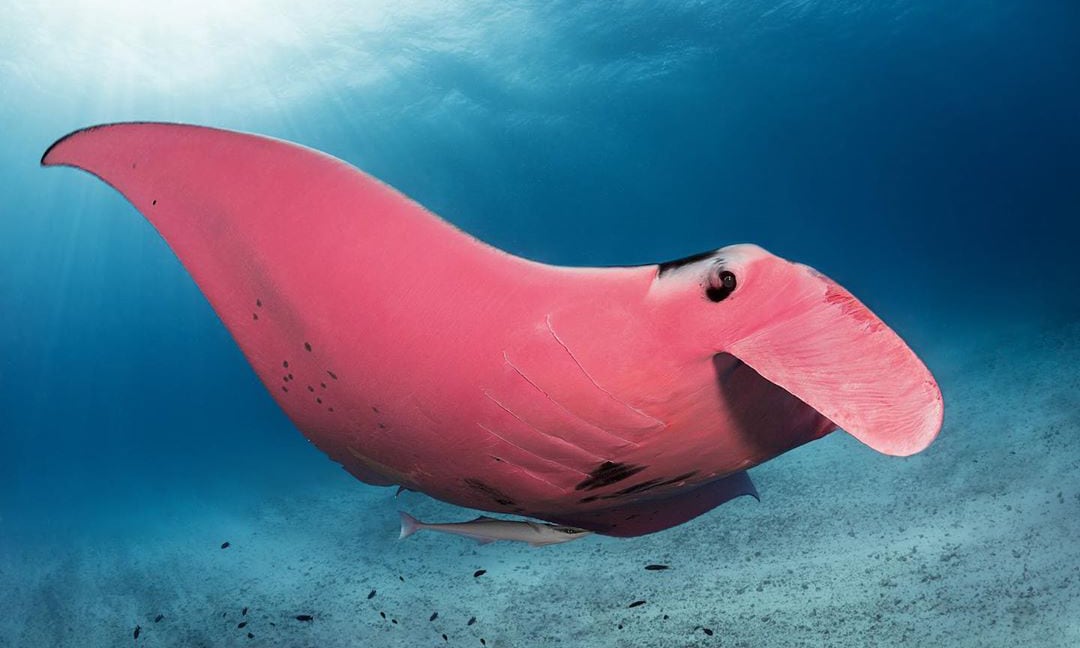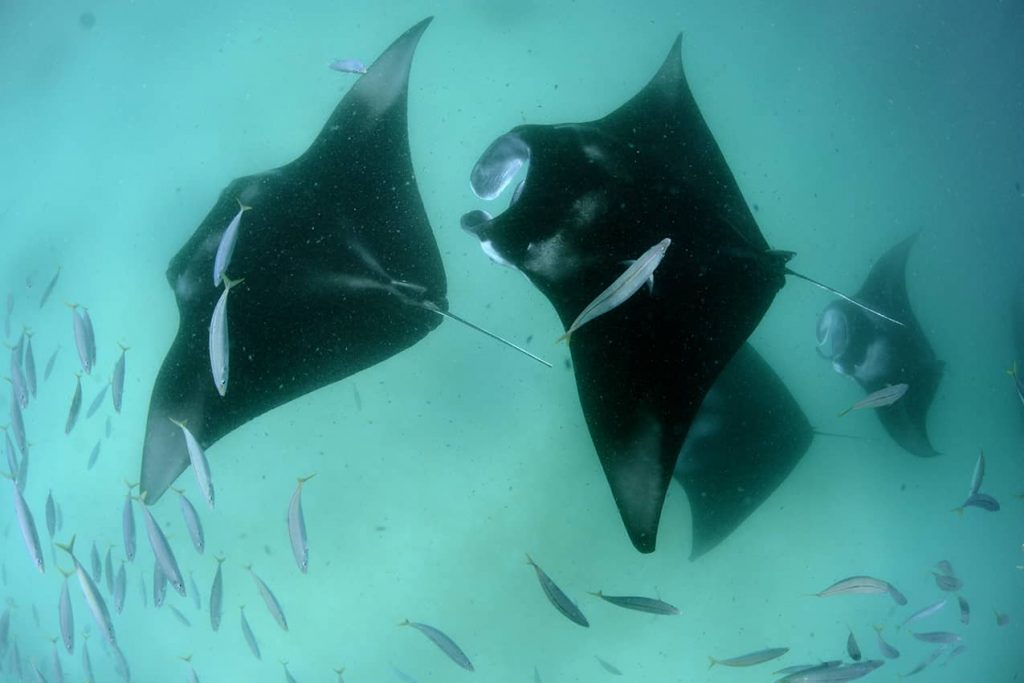
Even as adults, Manta rays have few predators, such as the occasional shark or killer whale. Rays learn to evade predators by spending much of their time on the sandy bottom, flapping their pectoral fins to throw sand on their body. Female rays give birth to one or two rays per litter, each one weighing up to 25 pounds at birth! Fortunately, these "pups," as baby Manta rays are called, do not face many predators. When their pectoral fins reach approximately 13 to 15 feet, Manta ray's are sexually mature. To reproduce, any season is mating season for these giants. Then, via gill arches, the plankton are redirected to the ray's stomach for digestion. The Manta ray utilizes its gills when it feeds by sucking water in through the gills, allowing plankton to remain in its mouth while water is pumped out. Due to the bottom-feeding behavior of these animals, their nostrils, mouth, and gill slits are located on the underside of their body. Plankton is one of the Manta rays favorite foods, in addition to small fish and crustaceans. These innocuous fins evolved for no other purpose than to help the ray herd plankton into its mouth. This misconception is the result of the Manta rays daunting size, as well as the presence of horn-like appendages on either side of its head. Ironically, this ray was known for quite some time as a "devil fish," thought to be capable of destroying fishing boats and the fishermen inside them. For one, Manta rays are known to be one of the most gentle creatures in the sea.

Similar to sharks, the skeleton of the Manta ray is made out of cartilage thus, some characterize these rays as simply "flattened out sharks." In spite of being closely related to sharks, Manta rays are quite different.


The Spanish meaning of "Manta" is blanket, describing the unique spherical body shape of this animal. Despite their preference for the open sea, Manta rays occasionally pass over the reef and make an appearance in the waters of Belize. These immense creatures are common in tropical waters, as well as both inshore and offshore waters of the western Atlantic, Pacific, and Indian Oceans. With a wing span that can reach 20 feet and a body weight known to exceed 3,000 pounds, Manta rays (Manta hamiltoni) are the largest type of rays. If stingrays are known as the "birds" of the sea, then Manta rays are surely known as the "gigantic birds" of the sea. Manta Rays - The Gentle Giants, Belize Barrier Reef


 0 kommentar(er)
0 kommentar(er)
